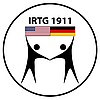A3 (2019 - 2022) - Regulation of IgE production in food allergy to egg white
Food allergy, the most common cause of anaphylaxis, is responsible for approximately 150 deaths a year in the U.S (PMID: 21051210). Severe food allergy is a Type I immune response that is mediated by allergen-specific IgE that triggers histamine release by mast cells. Despite its important role in the development of Type I allergies, the mechanism underlying the production of IgE antibodies remain elusive. In a peanut food allergy model that uses cholera toxin as an adjuvant, allergen-specific IgE has been proposed to be maintained by re-activation of IgG1 memory B cells that isotype switch in response to IL-4, rather than by re-activation of IgE memory B cells. The isotype-switched B cells then differentiate into relatively short-lived IgE plasma cells rather the than long-lived bone marrow plasma cells that are typical for other isotypes (PMID: 28216433). Thus, it has been proposed that IgE responses are shorter lived than other Ig responses for two reasons: a lack of IgE-committed memory B cells and a lack of long-lived IgE-secreting plasma cells. Consistent results have been observed in studies of mice infected once with gastrointestinal helminthes. However, these characteristics of the IgE response that has been observed in the peanut/cholera toxin and primary worm infection models might be not be universally true for IgE production. In this regard we have provided evidence that inhalation of aerosolized allergen generates long-lived plasma cells that maintain IgE titers in another model of type I allergy (PMID: 19815119). Sequential class-switching through an IgG1 intermediate is clearly not required to generate IgE+ plasma cells, because IgG1-deficient mice are able to generate wild-type levels of IgE (PMID: 8195724). In addition, studies of human egg-allergic patients suggest that IgE production can occur independently of sequential switching via IgG, because some of the ovomucoid (egg allergen) epitopes recognized by IgE are not recognized by IgG antibodies (PMID: 11944924).
Consistent with this, a recent paper provided evidence for the existence of IgE+ memory B cells in allergic patients (PMID: 29380876). Moreover, although isotype switching of B cells to IgE is dependent on IL-4 in mice and IL-4 or IL-13 in humans, allergen-specific IgE was not inhibited in more than 30% of patients treated for 32 weeks with the IL-4 receptor blocking antibody Dupilumab, (PMID: 30092324), which blocks both IL-4 and IL-13 signaling. This suggests that IgE is at least partly produced by long-lived IgE+ plasma cells and/or by the differentiation of IgE memory B cells into plasma cells. Together, these data imply that IgE antibody secretion can be maintained by re-activation and isotype switching of IgG1 memory cells; by re-activation of IgE memory cells and also by long-lived IgE-secreting plasma cells.
We propose that the relative contributions to the maintenance of IgE titers of long-lived intestinal plasma cells, IgE-committed memory B cells and IgG1 memory B cells that isotype switch and differentiate into short-lived IgE+ plasma cells depend on antigen characteristics, the route of antigen administration, co-stimulatory factors, and the affinity of the antibody response to that antigen.
Aims:
1. To determine whether allergen-specific IgE and IgG are maintained by identical or different B cell/plasma cell clones in our egg-allergen model.
2. To investigate where and how IgE memory is maintained (bone marrow, spleen vs gut, IgG vs IgE memory cells, long-lived vs short-lived plasma cells).
3. To elucidate the impact of IL-4 blockade and CD4 T cell depletion on IgE memory titers in our model, and in other models using different immunization protocols (route of allergen application, adjuvant, and number of boosts).
4. To investigate the effects of allergen-BCR affinity and co-stimulatory factors on the fate of IgE- vs IgG-committed B cells
Principal Investigators


Students




